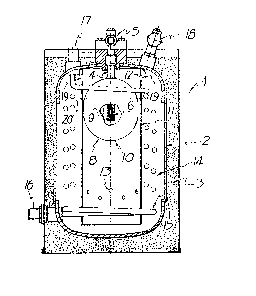Une partie des informations de ce site Web a été fournie par des sources externes. Le gouvernement du Canada n'assume aucune responsabilité concernant la précision, l'actualité ou la fiabilité des informations fournies par les sources externes. Les utilisateurs qui désirent employer cette information devraient consulter directement la source des informations. Le contenu fourni par les sources externes n'est pas assujetti aux exigences sur les langues officielles, la protection des renseignements personnels et l'accessibilité.
L'apparition de différences dans le texte et l'image des Revendications et de l'Abrégé dépend du moment auquel le document est publié. Les textes des Revendications et de l'Abrégé sont affichés :
| (12) Brevet: | (11) CA 1297311 |
|---|---|
| (21) Numéro de la demande: | 1297311 |
| (54) Titre français: | REFROIDISSEUR DE LIQUIDE |
| (54) Titre anglais: | LIQUID COOLERS |
| Statut: | Périmé et au-delà du délai pour l’annulation |
| (51) Classification internationale des brevets (CIB): |
|
|---|---|
| (72) Inventeurs : |
|
| (73) Titulaires : |
|
| (71) Demandeurs : | |
| (74) Agent: | LAVERY, DE BILLY, LLP |
| (74) Co-agent: | |
| (45) Délivré: | 1992-03-17 |
| (22) Date de dépôt: | 1988-04-12 |
| Licence disponible: | S.O. |
| Cédé au domaine public: | S.O. |
| (25) Langue des documents déposés: | Anglais |
| Traité de coopération en matière de brevets (PCT): | Non |
|---|
| (30) Données de priorité de la demande: | |||||||||
|---|---|---|---|---|---|---|---|---|---|
|
A B S T R A C T
A fluid cooler comprising:
(i) a housing having an inlet and an outlet for
refrigerant and an inlet and an outlet for fluid to be
cooled;
(ii) a chamber located in the housing and in
engagement with the housing about the inlet for
refrigerant, the chamber having openings therein to permit
refrigerant to pass from the chamber into a space defined
between the housing and the chamber;
(iii) a conduit for passage of fluid to be cooled
therethrough, the conduit located within the space and
extending from the inlet to the outlet for the fluid to
be cooled, and
(iv) a float controlled valve located in the
chamber for control of ingress of liquid refrigerant into
the chamber.
Note : Les revendications sont présentées dans la langue officielle dans laquelle elles ont été soumises.
Note : Les descriptions sont présentées dans la langue officielle dans laquelle elles ont été soumises.

2024-08-01 : Dans le cadre de la transition vers les Brevets de nouvelle génération (BNG), la base de données sur les brevets canadiens (BDBC) contient désormais un Historique d'événement plus détaillé, qui reproduit le Journal des événements de notre nouvelle solution interne.
Veuillez noter que les événements débutant par « Inactive : » se réfèrent à des événements qui ne sont plus utilisés dans notre nouvelle solution interne.
Pour une meilleure compréhension de l'état de la demande ou brevet qui figure sur cette page, la rubrique Mise en garde , et les descriptions de Brevet , Historique d'événement , Taxes périodiques et Historique des paiements devraient être consultées.
| Description | Date |
|---|---|
| Inactive : CIB désactivée | 2011-07-26 |
| Inactive : CIB de MCD | 2010-02-01 |
| Inactive : CIB dérivée en 1re pos. est < | 2010-02-01 |
| Inactive : CIB dérivée en 1re pos. est < | 2010-01-30 |
| Inactive : CIB expirée | 2010-01-01 |
| Inactive : CIB de MCD | 2006-03-11 |
| Inactive : CIB de MCD | 2006-03-11 |
| Inactive : CIB de MCD | 2006-03-11 |
| Inactive : CIB de MCD | 2006-03-11 |
| Le délai pour l'annulation est expiré | 1998-03-17 |
| Lettre envoyée | 1997-03-17 |
| Accordé par délivrance | 1992-03-17 |
Il n'y a pas d'historique d'abandonnement
Les titulaires actuels et antérieures au dossier sont affichés en ordre alphabétique.
| Titulaires actuels au dossier |
|---|
| GSA INDUSTRIES (AUST.) PTY. LTD. |
| Titulaires antérieures au dossier |
|---|
| ROY GEORGE HILTON |